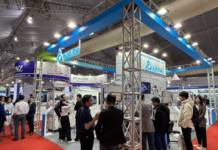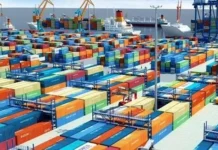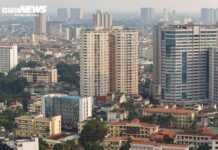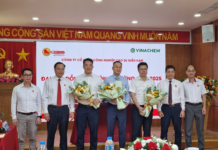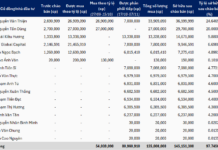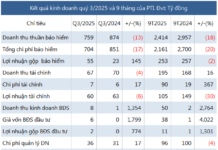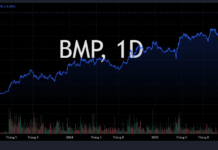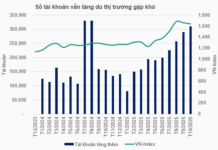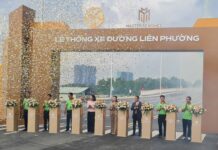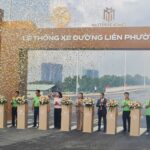One of the concerns in Vietnam today is the country’s lack of high-speed railways and the subsequent questions about the ability to construct, operate, maintain, and, most importantly, own the technology for such a venture. The proposal suggests mobilizing resources to enable Vietnamese enterprises (DN) to participate in building this high-speed railway.
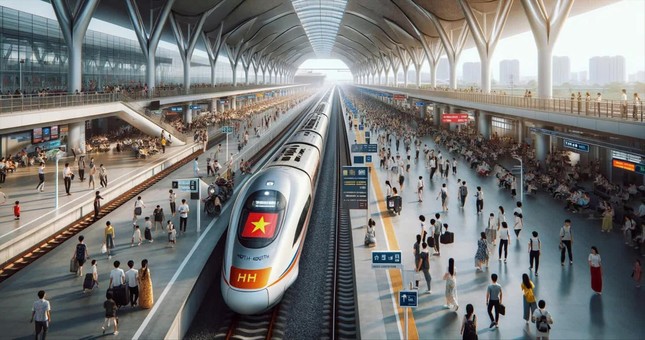
The proposal suggests forming a consortium of domestic enterprises to receive technology transfers.
Mr. Tran Thien Canh, Director of the Vietnam Railway Administration, stated that the experience of other countries shows that high-speed railways facilitate the formation of a railway industry, engaging large conglomerates. For example, South Korea received technology transfers from France and then engaged large domestic industrial corporations such as Daewoo and Hyundai to form a consortium, requiring the French supplier to sign a contract with this consortium for technology transfer.
In Vietnam, enterprises like VNPT and Viettel, specializing in chips and electronic circuits, or automobile manufacturers like Truong Hai, are well-positioned to participate. They can contribute not only in producing electronic components, accessories, or automobiles but also in railway-related industries.
According to the proposal, the planned high-speed North-South railway line is expected to have a structure comprising 60% bridges, 10% tunnels, and 30% ground. In terms of construction, leaders of the Vietnam Railway Administration believe that, based on the experience of building the North-South expressway, building bridges and tunnels requires advanced techniques, and domestic enterprises are fully capable of handling the design and construction.
Regarding the trains, Vietnam has already upgraded all old carriages into high-quality ones, and there are two railway industrial facilities: the Di An Locomotive Factory and the Gia Lam Locomotive Factory, established during the French period, now equipped with modern machinery, including CNC cutting machines. Some enterprises in the iron and steel industry have expressed their ability to produce railway steel if given the opportunity.
Rails and switch blades are more complex than rails, but if the market demand is large enough, domestic enterprises can participate in researching, producing, and supplying them.
The most complex aspect is the information, signaling, and train control systems, with only a few manufacturers worldwide, such as Hitachi (Japan), Alstom (France), and Siemens (Germany). Even China has only achieved over 80% self-sufficiency, still relying on core technology providers.
According to a leader of the Ministry of Transport (MoT), one of the requirements for the high-speed railway project is for Vietnam to completely own the technology, including operation, maintenance, repair, and replacement, and gradually produce some components. After consulting the experiences of 22 countries, especially the six with the most developed high-speed railways today (Japan, France, Spain, China, Germany, and South Korea), several nations expressed their willingness to transfer technology to Vietnam.
To facilitate the participation of domestic enterprises in the development of the railway industry, the MoT proposes creating a special mechanism to allow investors in high-speed railway projects, national railways, and urban railways to require general contractors and technology transfer from contractors. Additionally, investors can request domestic enterprises to supply vehicles and equipment that can be produced locally.
For the vehicles, there are conditions for technology transfer, operation and maintenance training, and a requirement for consortia with domestic enterprises to assemble 30-40% of the carriages supplied. Furthermore, railway-related products, supplies, and equipment are included in the list of priority mechanical products in Vietnam’s mechanical industry development strategy to enjoy preferential policies.
The proposal also suggests forming a consortium of domestic enterprises to receive technology transfers, research and development, and master operation and maintenance, gradually producing replacement components, information and signaling systems, and assembling and manufacturing new carriages.
“If provided with suitable technology transfers, Vietnam has the potential to develop its railway industry, moving towards self-sufficiency and localization in manufacturing carriages, power supply systems, information and signaling systems, and total autonomy in operation and maintenance, as well as producing replacement components for high-speed railways,” said a leader of the MoT.
Allocating over $400 million for human resource training
Ensuring a skilled workforce to operate the high-speed railway is another challenging aspect of the project. The MoT proposes a training program for human resources in three forms (domestic, overseas, and combined training) and four levels (technicians, engineers, masters, and doctors) for five subjects (state management agencies, project management units, operating units, training institutions, and research institutions).
The training will be funded by the project, with a total budget of approximately $348 million. Of this, the project operator will borrow about $340 million to train 13,880 personnel in management and operation and about $8 million to train 700 project management personnel.
Additionally, the proposal suggests allocating approximately $88 million from the project to train personnel for state management agencies, lecturers, and scholarships for students in specific fields such as metallurgy, mechanical engineering, electronics, telecommunications, automation, and artificial intelligence. It also includes building shared laboratories to serve training, research, and development.
According to the MoT, after the construction is completed, the Vietnam Railway Corporation (VNR) is expected to be the unit responsible for managing, operating, and exploiting the entire infrastructure. They will be handed over all the means and equipment for exploitation and will be responsible for repaying the investment costs. As per the plan, the VNR will form two enterprises: one for management and business and the other for receiving investment means from the project for transport business.
VNR leaders shared their plans to prepare human resources to manage and operate the high-speed railway. Once the proposal is approved for investment, the corporation will select some management staff and lecturers from the Railway College to undergo training first, followed by others. A training roadmap has been developed, aligning with the project’s implementation progress, with varying training durations depending on positions and roles.
“The most time-consuming training is for train drivers. VNR will select young train drivers with experience in operating conventional trains for initial training. The entire line will require over 700 drivers, but they will be trained in batches according to actual needs,” said the VNR leader.


